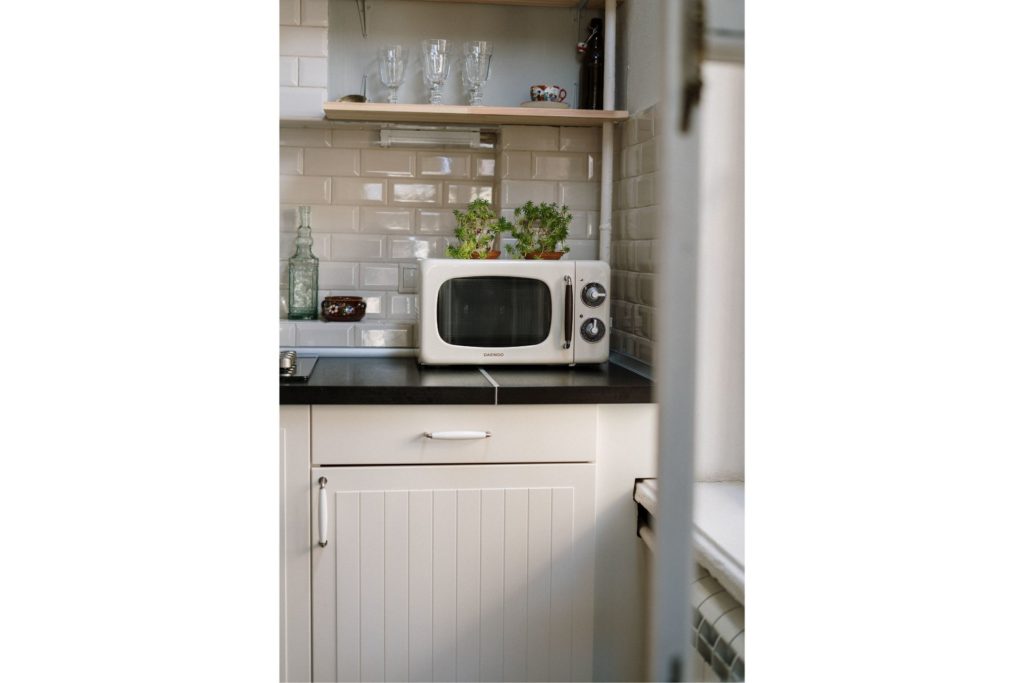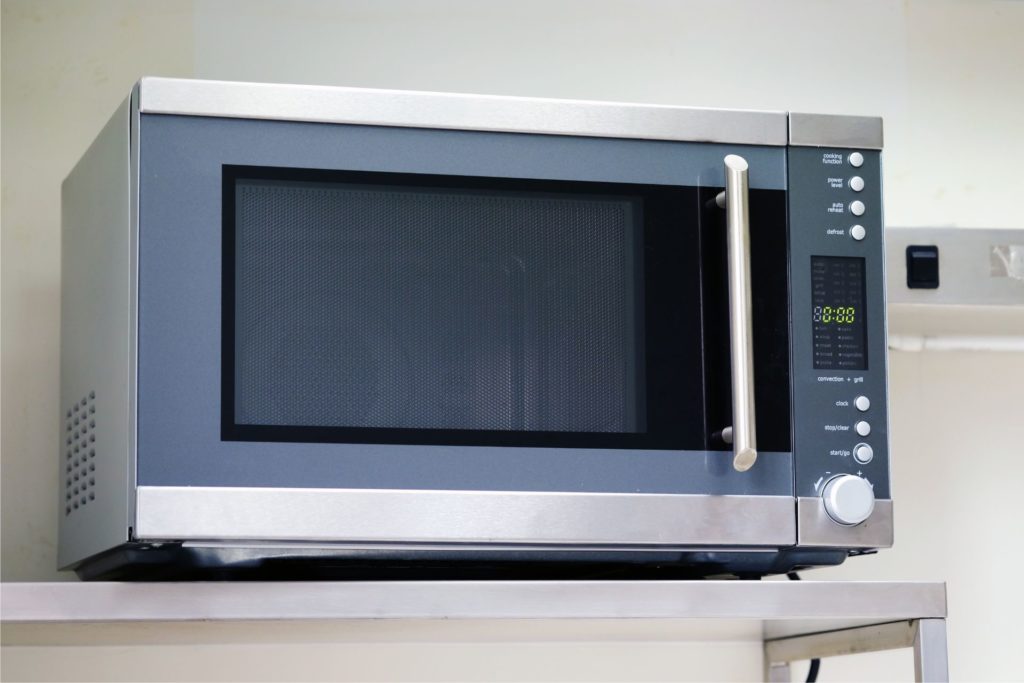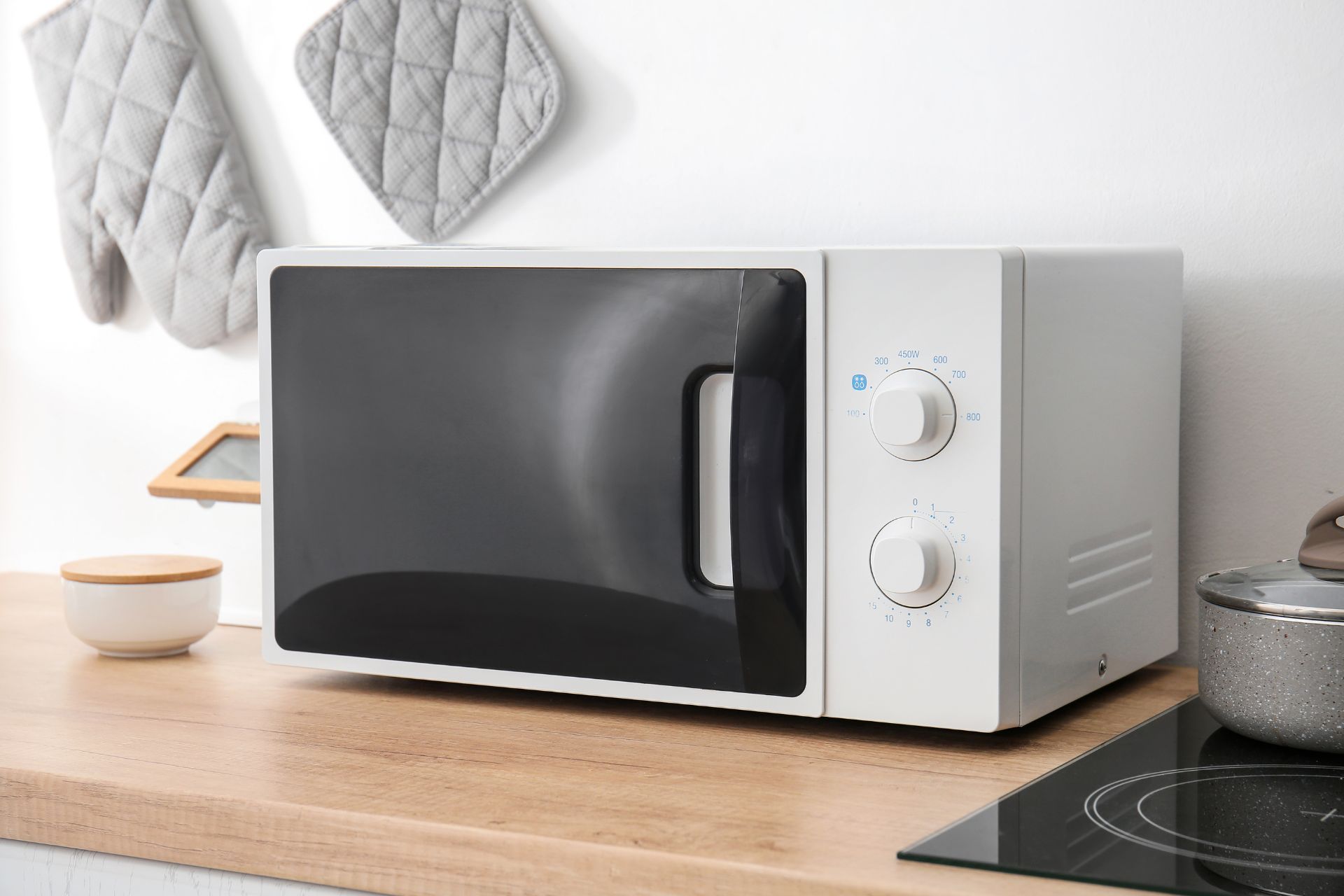If you just bought a microwave, you should take a moment to identify a suitable location. The location seems inconsequential to laypeople, but it matters because the location affects the ventilation. You can’t surround your microwave with objects; if you do, you should give the appliance a certain amount of clearance.
How Much Clearance Do You Need Around A Microwave?
Maintain a clearance of 3 inches on either side, 3 inches at the top, and one inch at the back. Keep the front edge three inches away from the edge of the shelf or counter. Otherwise, the device may fall off. Also, keep these appliances away from heat sources.
Average Microwave Clearance Space
| Microwave Type | Clearance Space |
| Convection | 10cm (Sides), 15cm (Rear), 15-40cm (Top) |
| Countertop | 3 inches (Sides and Top), 1 inch (Rear) |
| Above Gas Range | 13 inches |
| Under Cabinet | 3 inches at the top |
There is no industry standard for clearance. Each manufacturer has its own estimate based on the technology they use to create their appliances. Therefore, you have to rely on the information the manufacturer has provided.
Admittedly, some brands are not particularly forthcoming where the clearance is concerned. Some manufacturers are hesitant to provide concrete figures regarding the clearance because they want to avoid the associated liability.
For instance, what if you follow their advice but things go wrong because of various factors in your home they couldn’t account for?
But this puts laypeople in a bind. If you have the option, you should listen to the manufacturer. If the manual hasn’t mentioned the clearance, visit the official website.
If you can’t find the information you need on the website, send the manufacturer a message. But what if they refuse to respond? What if they don’t want to advise you on this issue?
Your only option is to use common sense. You know that microwaves require ventilation. Therefore, you should provide the clearance you think they need to operate efficiently.
If you don’t trust yourself, talk to a technician. They have a keen understanding of microwaves. They can provide some accurate estimates based on the information you’ve provided.
Why Do Microwaves Need Space Around Them?

Microwaves do not generate heat in the traditional sense. They produce radiation. That radiation makes the particles in your food vibrate. Those vibrations elevate the temperature.
When you mention clearance space, many people associate the topic with the dangers microwave radiation presents. They agree with individuals who prefer to stay two or more inches away from a microwave to escape the damage microwave radiation can do.
However, The New York Times does not want consumers to worry. They spoke to experts from the Center for Devices and Radiological Health, who revealed that microwaves would only leak five milliwatts of radiation per square centimeter during their lifetime.
The FDA has prohibited manufacturers from selling microwaves unless they keep radiation leaks below the threshold above. 5 milliwatts per square centimeter is drastically lower than the level of radiation that harms humans.
Manufacturers are not concerned with the radiation a microwave leaks because they have safety measures in place that include metal meshing on the doors.
The clearance space has nothing to do with the radiation, at least not directly.
Microwave produces electromagnetic radiation that makes the molecules vibrate. That includes the air molecules. The hot air needs a way to escape as it expands, which is why clearance space is so important for countertop microwaves. Over-the-range appliances are different because they have an internal cooling system that includes exhaust fans.
But those exhaust fans work in tandem with a ventilation system. The fans will lead the hot air away, but without a proper ventilation system, the microwave will continue to overheat.
Some ventilation systems will lead the hot air out of the kitchen. Others will recirculate the warm air back into the kitchen.
You cannot install a microwave with complex airflow requirements without a technician. Ventilation systems are challenging because they have to eliminate steam, smoke, and bad smells.
The heat is just one component. Although, it is the most dangerous. Depending on the elements you want to eliminate, homeowners may choose to guide the air from the microwave through special filters that remove particulates.
This only matters when you want to recirculate air back into the kitchen. You can ignore special filters by ejecting the hot air from the house. But this means installing a venting mechanism that connects to the duct system.
If you don’t have a duct system, do you have the money to install one? External venting systems are expensive. But again, you may not have a choice in the matter.
If your technician thinks you need one, they will compel you to install the system. Then again, some locations expect homeowners to apply for special permits before installing certain venting systems. This is especially true for external vents that run the risk of polluting the air.
Many homeowners opt for recirculating venting systems because of their convenience and inexpensive nature.
As you can see, microwaves are not a laughing matter. Then again, most homeowners use countertop microwaves. Countertop microwaves do not require venting systems.
It is enough to surround the appliance with sufficient clearance. If you give them enough space at the top and on either side, they will operate safely and efficiently.
Countertop microwaves will only present a challenge if you want to keep them in cabinets. Consumers prefer cabinets because microwaves are an eyesore for some people.
They don’t want to leave the devices out in the open. A cabinet allows the appliance to blend into the background. But this configuration only works when the cabinet is strong enough to hold the microwave.
Microwaves are pretty heavy. Although, you can task a carpenter with constructing a suitable cabinet that matches the countertop microwave’s weight.
The clearance doesn’t matter unless you want to run the microwave without taking it out of the cabinet, which is possible.
What if I Don’t Provide Enough Clearance For A Microwave? What Happens?

The clearance at the front is just as important because it affects the door swing. The last thing you want is to take hot dishes out of the microwave at an awkward angle because you don’t have enough room to swing the door open.
However, the inconvenience is the least of your worries. Insufficient ventilation will harm the appliance. Without proper airflow, the microwave will overheat. If this situation persists, you will do irreversible damage to the microwave’s sensitive components.
If this situation continues, don’t be surprised if the appliance catches fire. Some people are smart enough to give their devices the proper clearance, but they forget to routinely clean the vents on the side and at the back.
Clogged vents can also start a fire if you run the appliance long enough for overheating to occur.

